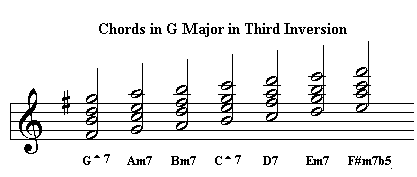CHORD INVERSIONS - 4 NOTE CHORDS
Here we will look at how 4 note chords can be played on the guitar in their different inversions. The theory is the same as for the triads except that we will add the 7ths. These block voicings are fine for piano but are often unplayable on the guitar. To make these chords playable we will convert the chords to Open voicings. The best way to do this is to raise the second note from the bottom of each chord up an octave. The following examples are in the key of G Major.
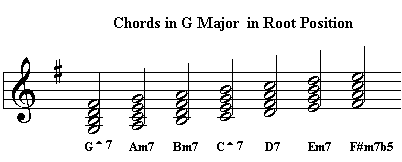
The chords above are in Block voicing. By raising the 3rds an octave these chords are more suited for guitar fingering. Even though we have altered the order of the notes, the chords are still in Root Position as it is the bass note which determines the Inversion.

By raising the root note up an octave the chords are now in the First Inversion with the 3rds in the bass.

To make the 1st inversion chords playable, we must raise the second and third notes of each chord up an octave. These chords are played by skipping a string in-between the first and second notes of the chord. These chords are in Open voicing, which suits guitar chord fingerings.
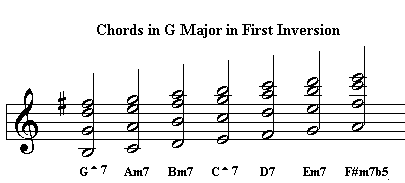
To create Second Inversion chords we will raise the roots and 3rds of our G Major chord scale chords, up an octave. This now means that the 5ths are in the bass. Again the chords are in block voicing.

To convert these Second Inversion chords into Open voicing, we will again raise the second note of each chord up an octave
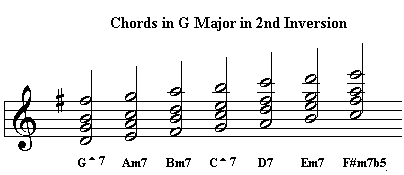
To create our Third Inversion chords from our G Major chord scale, the roots, 3rds and 5ths are raised an octave, leaving the 7ths in the bass.
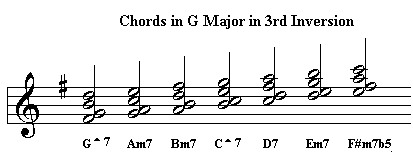
We will again raise the second note of each chord up an octave to convert the chords into open voicings.
